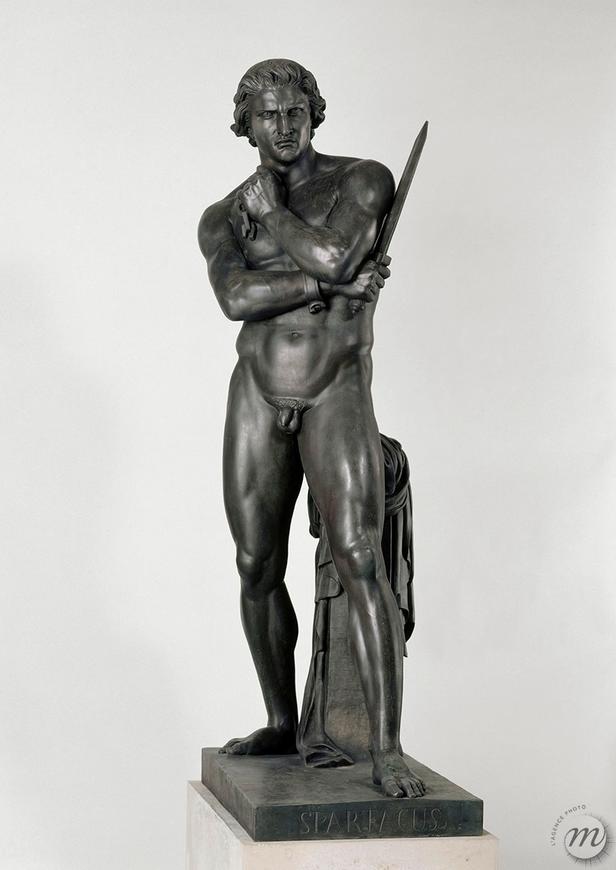He stares at us, looking stern, at the same time grimly determined and furious. In his right hand, a sword. In the left, his broken chains. Spartacus, the Roman army soldier who has become a gladiator, has just freed himself from his fetters and is determined to do battle.
The life of this historical figure is difficult to trace. All we know with certainty is that he was born in Thrace - today in the Balkan peninsula - and that he led a revolt of slaves between 73 and 71 BC. This revolt was suppressed violently by the Roman general Crassus.
Spartacus is still seen today as the epitome of resistance against a totalitarian regime. He is a paragon of virtue. It is not surprising then that the sculpture was the subject of political exploitation!
In effect, here you see a symbol of the Trois Glorieuses, the three days of revolution. These three days of revolt, in July 1830, led to the removal of King Charles X and the accession of Louis-Philippe. In fact, we know that it was not the artist's intention to denounce royalty, on the contrary... The marble version of Spartacus, now kept in the Louvre, was commissioned from the artist, in 1828, by the royal administration of Charles X! History itself makes its own paradoxes.
Inventory number: Sc. 5

He stares at us, looking stern, at the same time grimly determined and furious. In his right hand, a sword. In the left, his broken chains. Spartacus, the Roman army soldier who has become a gladiator, has just freed himself from his fetters and is determined to do battle.
The life of this historical figure is difficult to trace. All we know with certainty is that he was born in Thrace - today in the Balkan peninsula - and that he led a revolt of slaves between 73 and 71 BC. This revolt was suppressed violently by the Roman general Crassus.
Spartacus is still seen today as the epitome of resistance against a totalitarian regime. He is a paragon of virtue. It is not surprising then that the sculpture was the subject of political exploitation!
In effect, here you see a symbol of the Trois Glorieuses, the three days of revolution. These three days of revolt, in July 1830, led to the removal of King Charles X and the accession of Louis-Philippe. In fact, we know that it was not the artist's intention to denounce royalty, on the contrary... The marble version of Spartacus, now kept in the Louvre, was commissioned from the artist, in 1828, by the royal administration of Charles X! History itself makes its own paradoxes.
Inventory number: Sc. 5